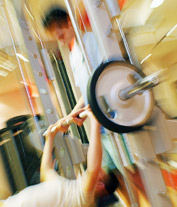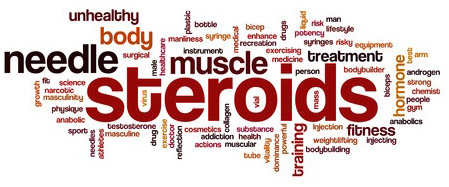 Anabolic steroids are synthetic designer versions of testosterone that were first developed in the 1930s to treat medical conditions. Shortly after this development, it was found that the growth of skeletal muscle increased in laboratory animals when they were given anabolic steroids.
Anabolic steroids are synthetic designer versions of testosterone that were first developed in the 1930s to treat medical conditions. Shortly after this development, it was found that the growth of skeletal muscle increased in laboratory animals when they were given anabolic steroids.
Today, anabolic steroids can be found in many different forms, including powders and pills that are taken orally, gels or creams that are absorbed through the skin, and in liquid forms that are injected into the muscle with needles. These various ways to consume anabolic steroids exist despite the fact that steroids are illegal and considered a controlled substance, in addition to being banned by major sports organizations such as IOC, NCAA, NFL, NBA and MLB.
Anabolic steroids are popular among teenagers. In fact, 25 percent of steroid users started taking them during their teenage years. Athletes participating in sports that require strength, power, speed, size and endurance typically are at greater risk for taking steroids.
 Many people start taking anabolic steroids because they believe that it will lead to increases in strength and muscle size, as well as improvement in athletic performance. However, steroids have not demonstrated that they improve performance or endurance, and increases, in strength and muscle size have been found only when steroids are taken at high doses and in conjunction with a strength-training program. Athletes may take steroids to gain weight, increase muscle mass, and improve power. However, non-athletes also use them to improve their physique and gain weight.
Many people start taking anabolic steroids because they believe that it will lead to increases in strength and muscle size, as well as improvement in athletic performance. However, steroids have not demonstrated that they improve performance or endurance, and increases, in strength and muscle size have been found only when steroids are taken at high doses and in conjunction with a strength-training program. Athletes may take steroids to gain weight, increase muscle mass, and improve power. However, non-athletes also use them to improve their physique and gain weight.Sometimes anabolic steroids are used by people who have a chronic preoccupation with the belief that they are not muscular enough, a condition called muscle dysmorphia. Muscle dysmorphia can be hard to diagnose because patients may appear healthy.

Powders and pills are taken orally.
Gels and creams are absorbed through the skin.
Liquid forms are injected through a needle into the muscle.
Athletes may obtain steroids from many different sources including, but not limited to: the Internet, personal trainers, friends, fitness magazines and physicians.
Short-term effects:
Males may experience male pattern baldness, aggression (steroid rage), development of stretch marks, acne, testicular shrinkage and breast development. Females may develop permanent deepening of the voice, facial hair, reduction of breast size and acne.
Long-term effects:
Individuals taking anabolic steroids in their youth have an increased risk of heart attacks, strokes, liver cancer, suicide and potential for stunted growth.
The most obvious external signs that may suggest anabolic steroid use include significant acne, change in behavior, rapid weight increase or marked improvement in athletic performance.
A physician might suspect anabolic steroid use based on acne, testicular size, development of stretch marks or male breast development.
Cycling can be defined as taking multiple doses of steroids over a specific period of time, stopping for a period and then starting over again. This normally occurs over weeks or months.
It is both illegal in the state of Maryland and very expensive to drug test student athletes in high schools.